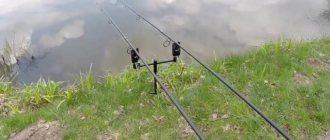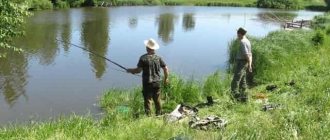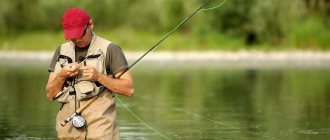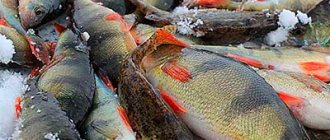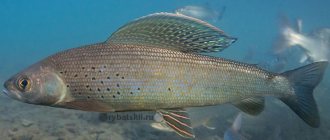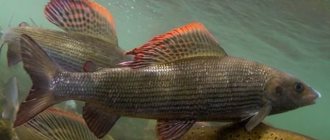Since time immemorial, fishing has been the most exciting form of recreation, naturally only for amateurs. And fishing in the Altai Mountains is not only exciting, but also not an easy task. Some fish, such as the Siberian grayling, the abundance of which is concentrated in the clean and at the same time fast-moving mountain rivers of Altai. In addition to grayling, in the territory of the Altai Mountains, which unites about seven THOUSAND lakes, there are also other equally valuable species of fish. Some of them are even listed in the Red Book not only of the Altai Republic, but also of Russia.
Content:
- Altai is considered an ideal place for mountain fishing.
- What can you catch in the rivers of the Altai Mountains?
- What is the best time for fishing in the Altai Mountains?
- Fishing in the Altai mountains is not so easy!
- Where to go fishing in Altai?
- Bite forecast (NeW)
- Photo gallery about fishing
- Video fishing excursion to Gorny Altai
Altai is considered an ideal place for mountain fishing.
It is not for nothing that the Altai Mountains is called the best place for fishing. In addition to mountain rivers, which abound in fish, they are also surrounded by magnificent mountain landscapes, which in turn attract the attention of tourists and travelers not only from Siberia and central Russia, but also from European countries.
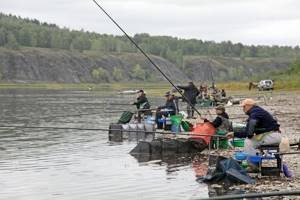
At the very beginning of the Altai Republic, along the banks of the Katun River, there are many tourist bases where you can not only rent a boat or fishing gear, but also hire an experienced fisherman - a guide who will become for a certain time your personal guide to places where fish masses accumulate in nearby areas. rivers and lakes.
By the way, it's not that expensive. if you definitely want to go on real fishing in the Altai Mountains, then you should not skimp and definitely order such a service.
For what, you ask? Next we will reveal the answer to this question!
What can you catch in the rivers of the Altai Mountains?
Features of fishermen in Altai at different times of the year
Unlike other regions of the Russian Federation, which are also quite natural for fishing, Altai differs significantly in its weather conditions and geographical location, which greatly affects all the resulting forms of life, including the fishing industry.
- In the summer you can fish exclusively in private reservoirs, where the fish are looked after and have long been adapted to certain conditions and the rhythm of life, although even in camp sites in the summer the bite is not very good;
- Autumn is the very time that is called the “opening of the season” for fishing, because the beginning of September is usually called the period when the fish begin to be active. In autumn you can fish not only on lakes, but also on rivers;
- In winter the fishing is very good. This is probably the most successful time, during which you can catch a lot of fish, especially such as grayling and taimen;
- In the spring, the fishing season comes to an end. And although spawning begins in early May, already at the end of the month, as many sources say, you can’t expect a good bite;
Grayling
The main goal of fishing in the Altai Mountains, for almost everyone, was and remains Siberian grayling. It lives mainly in high mountain areas or in fast, clear rivers. This is due to the fish’s love for a certain oxygen content and the absence of dirt in the water.
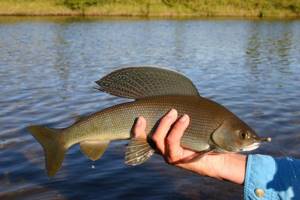
Grayling is not considered an ordinary fish. He is very careful, and his speed and strength will not allow you to easily pull him out of his water shelter. When catching it, you will definitely need to remember your fish hooking skills. And accordingly, the larger it is, the more difficult it will be to get it out. The most difficult places to catch fish from this family are the channels between lakes.
In terms of its nutritional value, cooked grayling meat can easily be classified as a high-quality food product, and if it is freshly salted and lightly pickled, you will get a delicacy with a special taste.
Fishing for grayling in the Altai Mountains is attractive at any time of the year, because grayling is a very interesting fish that does not like to sit in one place. Its average length is 20-35 centimeters, but occasionally larger representatives are caught on a hook; their length reaches almost half a meter and their weight is three kilograms.
Grayling goes to spawn in late May, early June.
Fishing techniques and tactics in October
In the water you need to rise with your back to the current. There are slight turbulences in the water behind the legs, pebbles and sand picked up from the bottom will interest the grayling and they are built a little further downstream. And if the bite suddenly ends, in this case it is necessary to shake the soil with your feet and after some moment the bite will resume. This method is suitable for fishing, in which place the flow of the river is the same in overall width.
In fast-flowing water there are always zones where the current subsides and almost serene water is formed. More precisely, in this area there are graylings in October. It is necessary to approach such areas with caution, so as not to scare the fish, and preferably stay a few meters away. The float must be launched in a similar way in order for it to be on the verge of calm and fast flows.
Catching grayling in October in Siberia will require resourcefulness and skill. This is a very interesting and difficult task. And catching grayling in October is complicated by weather conditions; for this reason, dress warmly and take with you a set of warm clothes. Hot tea in a thermos, matches to start a fire and a team of similarly motivated fishermen. Think about everything down to the details and exciting fishing with a wonderful catch is guaranteed for you.
Taimen
Taimen is considered the largest (larger than salmon) and the most valuable fish of the salmon family that lives in Lake Teletskoye. Some representatives of this family of fish found in Lake Teletskoye reach impressive sizes - one and a half meters in length and weighing up to 80 kilograms.

Fishing in the Altai Mountains for taimen as well as grayling will not leave anyone indifferent. Despite its impressive size, the body of the fish is “understated”, has an oblong shape and is compressed from the sides, into a flattened head. The fish's mouth, as befits a predator, is huge. The teeth in a compressed state form something like a fence.
The upper part of the head and on its sides of Taimen are scattered with round dark spots, and on the sides of the greenish-brown body with pink fins, which become bright red during the period when the fish goes to spawn, the spots take on a dark crescent color.
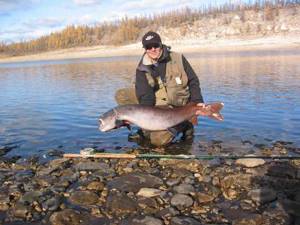
Lake Teletskoye is considered to be a favorable place in the Altai Mountains for fishing for Taimen. There it spread everywhere, but in the place of the Chulyshman fall, and in the Kamga and Kyga bays it accumulates in large quantities. Taimen usually spawn in the spring - late May - early June.
It is noteworthy that the residents of the Urals call taimen “red pike”.
The short period after the spawning of taimen, as well as in September and October, is considered the most fruitful for fishing for taimen.
Do not forget that since 1996, in order to preserve taimen populations, this fish was added to the Red Book of the Altai Republic, and two years later in 1998 it was listed in the Red Book of the Altai Territory. Catching this fish has become prohibited in recent years. If you still find taimen on your hook, then in order to avoid problems with the law, it will be easier for you to let it go.
What to use to catch grayling in October - bait
Since the weather is quite cold in autumn, and catching live bait is extremely problematic, it would be better to use artificial flies. It is preferable for a carnivore to use a weight fly of an orange hue or a grayish-brown one with a edging made of narrow lurex of a golden tone.
Also in stock must be flies ranging from lead to dark colors. But unique curiosity must be directed to the presence of emerald flies depicting caddisfly larvae. In itself, the caddis caterpillar is a doll of a meadow butterfly, the length of which reaches 25 millimeters, and its color is a dull chestnut tone, however, there are also individuals of a greenish tone with admixtures of yellowish or white colors. The most necessary thing for catching grayling in early autumn is a petal spinner 15–30 millimeters in length.
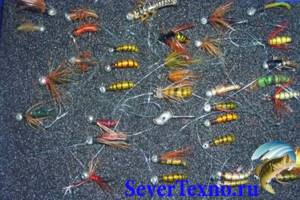
Of course, there is quite a huge selection of optimal flies on the market. But from among this variety it is possible to note the following effective attachments:
- Red Ant flies produced on a size 18-14 hook. As for the front and rear elements, in this case they are made of reddish dubbing, the brush is made of a dark or scarlet rooster feather, and the head and the collecting thread are made in a rather dark color.
- Hydropsyche Nymph is a caddisfly simulation solution, specialized preferably for large individuals. Contains an absolutely realistic type. Based on the research, it is possible to conclude that, having pricked itself on the tip of the hook, the predator does not back away, and subsequent bites are not forced to wait.
- The Deerhair Caddis fly is a rather beautiful bait, made from dubbing of different color shades: dark, chestnut, yellowish, red, scarlet, greenish. The brush is made from a dark or red rooster feather. And one more distinctive feature: the wing is made of deer hair. To register the fly on hook No. 16–10, use a dark-colored thread. This type of bait for a carnivore requires special interest, which is often proven by a bite already on the first retrieve.
Bream
As you probably already guessed, it is not particularly directly related to fishing in the Altai Mountains, but still it is not everywhere there, but it is there! This fish is not a rare species and hunting for it is not that difficult. But anyone who knows the smell of freshly smoked bream right on the shore will not remain indifferent.
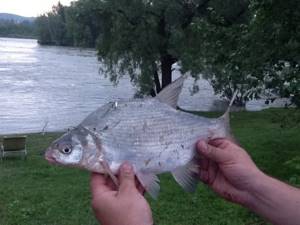
The bream swam into Lake Teletskoye from the river of the Ob reservoir back in 1964. The population of this family of fish is not that large yet. However, it is worth noting with complete confidence that acclimatization to the cold nature of the waters of Lake Teletskoye went with a bang. Nowadays, bream mainly lives in the delta of the Chulyshman River, at the southern end of the lake.
What is the best time for fishing in the Altai Mountains?
Fishing in the Altai Mountains is good, as they say, both in winter and summer. Some people love winter fishing, and some prefer summer fishing in the lakes and rivers of the Altai Mountains. Almost all lakes of the Altai Mountains abound in fish. In addition to the lakes, you will be pampered by an abundance of fish in the following rivers: Chulyshman, Symulta, Katun and Ursul, where it is easy, but with certain skills, you can catch: grayling, taimen, pike and perch.
Some fish species live only in these places. There are no other similar ones in any reservoirs, either in the country or in the world. They are truly unique.
Whatever your choice of seasonality, fishing in the Altai Mountains will bring you great delight and, accordingly, will leave indelible memories of expensive trophies for a long time, which, in addition to everything else, you can easily capture on a photo or video camera.
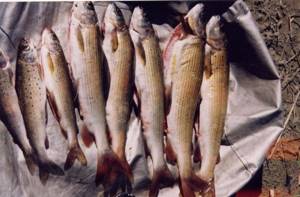
The “cool” fishing season in the Altai Mountains falls within the period from early August to mid-September. And in the tributaries of the Katun River, the best period for fishing is a short period of time from the last days of June to the beginning of July. In the lower reaches of the Katun, Burbot is excellently caught, and on warm summer days, carp fish are excellent.
In the fall - September, October, fishing will also be very fruitful, because the fish diving into natural deep traps in the form of holes remains an easy prey for those who like to fish.
In words, it seems so easy to put gear on a spinning rod and catch fish. But in reality, not everything is so simple.
Fishing in the Altai mountains is not so easy!
Surely, anyone who fishes for the first time knows that all fish are caught differently in different bodies of water, even if they are of the same breed. Fishing in the Altai Mountains was no exception.
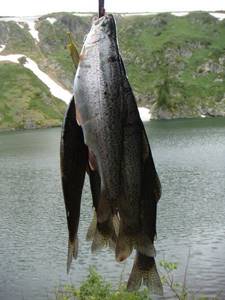
Some of the residents of the Altai Republic tell similar stories that they say that tourists came to their region, all prepared, with expensive gear, boats and other equipment. Well, casually they asked where do you have fish? Well, they explained it, showed it to them - they went fishing.
After 4 days they return. Residents ask them where the fish are? They say: no matter what we did, we didn’t undertake and changed a hundred places, but we still couldn’t catch the fish.
They are standing talking with local residents, they want to find out why the fish are not being caught, and behind them is an elderly man who lives in the same village and has been fishing since childhood, with a full bucket of various fish.
They asked him in unison - where did you catch so many fish? He says, well, he went down to the bank here after 10 meters and caught an armful in half an hour.
Without hesitation, they scoop up and dive back there, to the same place.
4 days pass again. They return again empty-handed. Residents ask them again, “Where is your catch?”
They responded: we never caught anything. They turned around and went home, and when they left they shouted that they would no longer come to this area for fishing, since there was no fish here at all.
To which again the grandfather walking behind with a full bucket of fish simply grinned!
Simply put, fishing in the Altai Mountains is simply excellent, you just need to be able to fish properly and that’s all.
Where to go fishing in Altai and what is caught here:
To more conveniently study the possibilities of fishing in the reservoirs of the Altai Mountains, we made a universal sign:
Fishing on Lake Teletskoye is a very difficult matter, but more or less experienced fishermen sometimes manage to pull grayling out of the water of Lake Teletskoye.
Bite forecast
Photo gallery about fishing
Grayling fishing on the Ina
Grayling bites on the Ina in summer and autumn until freeze-up. In November, when the ice edge appears along the banks, there are more grayling the river And only in November grayling weighing a kilogram or more is caught It is caught by fly fishing at the top of the water, and with spinning rods (fishing rods) with a Tyrolean stick and with a tackle with flies, which local fishermen for some reason call “ bulda ”. You should not compare this tackle with the tackle of the same name for perch fishing.
Our fishing began at dawn on Saturday morning. The weather was great and blessed us with sunshine for two days. There was no fly fishing gear in our arsenals. We fished with spinning rods with Tyrolean sticks and white and yellow flies, with periodic changes to spinning rods with a loaded “buldo”, on which the same flies .
Tackle for fishing grayling on the Inya River
A little about gear. Spinning rods for grayling fishing should be ultra light or light. The main fishing line on spinning rods is ∅ 0.16 mm braid, on leashes with flies the usual (Japanese) fishing line is ∅ 0.22 mm, inexpensive flies in different colors. When there are flies of different colors on the bulldozer, it is easier to understand what color flies are preferable to grayling.
It happens that in the course of one day, first he takes one bait, then another. Or, on the contrary, he actively grabs the same flies. For us, the best working baits for grayling were white and yellow flies. Within an hour after dawn, at least a dozen fish were flopping around in the cages.
Balda for grayling on the Inya River
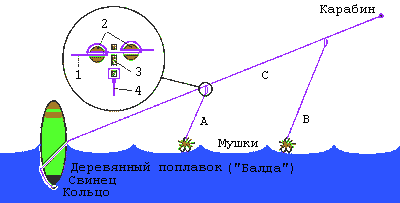
At the very bottom of the float, a weight equal to half the weight of the float is attached to add weight. For a float, the load is very important, otherwise there will be no proper line tension and sensitivity to the grayling bite. A hole is drilled in the central part of the float with a slope for the passage of the fishing line. The fishing line is passed through the float into an inclined hole and tied to a ring. The ring is a screw with a ring. The number of leashes with flies varies from 2 to 4 pieces and depends on the length of the spinning rod; the longer it is, the more leashes you can install. A short spinning rod is not convenient for casting tackle with more than 2 leads.
The length of the leashes is 10 - 15 cm. They are placed at intervals of 20 - 50 cm from the float. Triple swivels are used to attach leashes to the main fishing line. But there is another way. Two beads for stopping (2) are attached to the main line of the “bald” (1). A small button with two holes (3) is placed in the middle; the main fishing line is passed through one of them, and the other is used to attach the leash (4). The leashes are equipped with flies or real insects. This gear is exactly what you need for catching grayling on fast rivers, which includes the Inya .
You need to throw the tackle upstream. Periodically twitch the line and constantly monitor the float. The distance of descent downstream is 100-150 m. After that, the tackle is pulled towards you and thrown back again.
How does the grayling bite on the “balda” happen?
When a grayling bites on a “balda,” it feels like it occurs with a sharp blow and a pull. With a good bite, it is not uncommon to be caught on each leash at the same time.
Tackle for grayling with a Tyrolean stick on the Inya River
The tackle with a Tyrolean stick is simple; you can make it on your knees in 10 minutes with all the components. The diagram shows what the tackle consists of, as well as all the necessary dimensions and distances.

